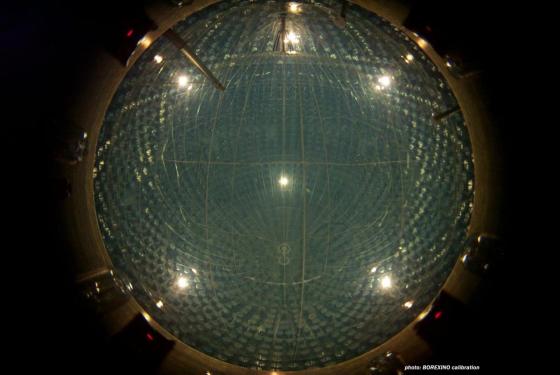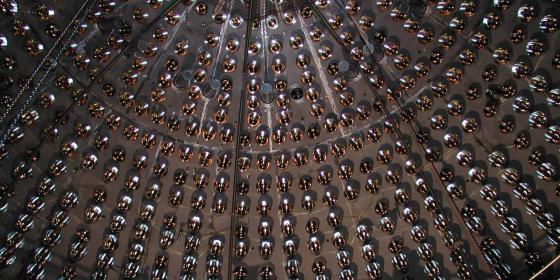For most of their existence, stars are fuelled by the fusion of hydrogen into helium. Fusion proceeds via two processes that are well understood theoretically since the year 1930: the proton–proton (pp) chain and the carbon–nitrogen–oxygen (CNO) cycle. Neutrinos are emitted along such fusion processes and their spectra are the signature of each reaction. The detection of solar neutrinos allows the study of the nuclear fusion processes.
The Borexino experiment is taking data in the Laboratori Nazionali del G. Sasso (italy) since the year 2007 and it detects the energy spectra and fluxes of solar neutrinos with the most sensitive detector ever built. During the period 2007-2014 Borexino detected all the neutrinos emitted in the pp cycle and also neutrinos emitted by the interior of the Earth, the so called geo-neutrinos. Now the collaboration announces, with its third paper published on Nature (see https://www.nature.com/articles/s41586-020-2934-0) the first detection of solar neutrinos from the CNO chain.
The Borexino findings quantify the relative contribution of CNO fusion in the Sun to be of the order of 1%; however, in massive stars, this is the dominant process of energy production. The importance of this work is in providing experimental evidence of the primary mechanism for the stellar conversion of hydrogen into helium in the Universe.
The interactions of neutrinos with matter are extremely rare. About 1021 neutrinos traverse the core of the Borexino detector every day but only about 200 interact in the scintillator and only about 50 of them produces a detectable signal every day. Among them the ones from the CNO cycle amount to about five every day.
The core of the detector is made off 100 tons of liquid organic scintillator located in the underground laboratory of Gran Sasso where the rocks shield the detector from the cosmic rays which would otherwise mask the neutrino signal. The scintillator light is detected by photomultipliers and hundreds of tons of ultrapure water shield the sensitive volume from gamma rays emitted by the rocks and by all the construction materials.
Borexino has reached record values about the radiopurity of its components : the inner scintillator is about 10 billions time less radioactive than a glass of natural water and it is the purest chemical element from radiochemical contamination ever made in the world.
The history of this experiment began in 1990 and the Borexino scientists have been the pioneers of the physics and technology of that low background detectors that now days are common in the world and in the INFN.
A group of physicists from the INFN group in Genova and of the Physics Department of Genova, including some people still working on the project, have been part of this enterprise since the beginning and from that time, the commitment of the Genoa group has always been significant and continuous.
Over the last thirty years, professors, researchers, students and technical staff of INFN and DIFI have alternated in the design, construction and analysis of data with roles of maximum responsibility and offering very important contributions. Many have brought the skills acquired in Borexino to other experiments or to the world of industry both in Italy and abroad, others are now retired. Someone is no longer with us, and it is to them that we dedicate this result. Older colleagues will remember Sandro Vitale and Corrado Salvo, some of the youngest in Genoa were students together with Simone Marcocci. Thanks to Sandro, Corrado and Simone. There is also your work in today’s result and our thoughts today go to you.
A. Caminata, S. Davini, L. Di Noto, M. Pallavicini, G. Testera, S. Zavatarelli



